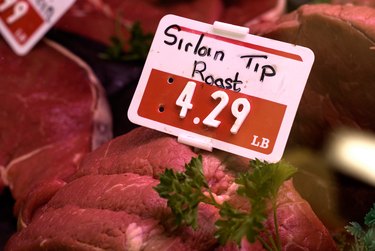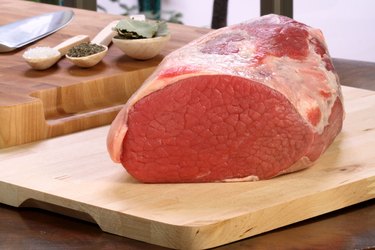
In 1930, Pat Olivieri was manning his hot dog stand in the Italian Market in South Philadelphia. Rather than eating a hot dog for lunch, he sautéed chipped beef, added it to an Italian roll and topped it with onions. A cab driver friend came by and asked for Olivieri's lunch, and with just one bite, the cabbie suggested the new sandwich was Pat Olivieri's ticket to a successful business. Today, the Philly cheesesteak is synonymous with sautéed chipped beef on a split Italian roll, topped with cheese, peppers and onions. Various recipes call for different cuts of thinly sliced steak.
Rib Eye
Video of the Day

Pat Olivieri's restaurant uses rib-eye steak for their Philly cheesesteaks. The rib eye is cut from the rib, hence its name. The marbling of fat throughout the meat provides a depth of intense flavor, making the rib eye a very juicy and tender cut of steak.
Video of the Day
Beef Tenderloin

Other chefs use beef tenderloin for their cheesesteaks. The tenderloin is aptly named because it is a tender cut of beef. It's also known as filet mignon, Chateaubriand or tender steak. Cut from the strip loin, the United States Department of Agriculture (USDA) designates the tenderloin a lean meat. A 3-oz. serving is only 170 calories. Despite its lean qualities, beef tenderloin is still very flavorful and leaves a buttery taste.
Sirloin Tip Roast

Also a lean cut of beef, the sirloin tip is cut from the lower portion of the ribs, specifically continuing from the portion where the tenderloin is cut. The sirloin tip roast is economical and lean; for the fullest flavor, it should be cooked to medium-rare.
Top Round

For those home cooks closely watching their budget and their waistlines, top round is a fine choice for a Philly cheesesteak. Also known as London broil, the top round is cut from the center part of the cow. Leaner than the tenderloin, a 3-oz. serving of top round is only 157 calories.